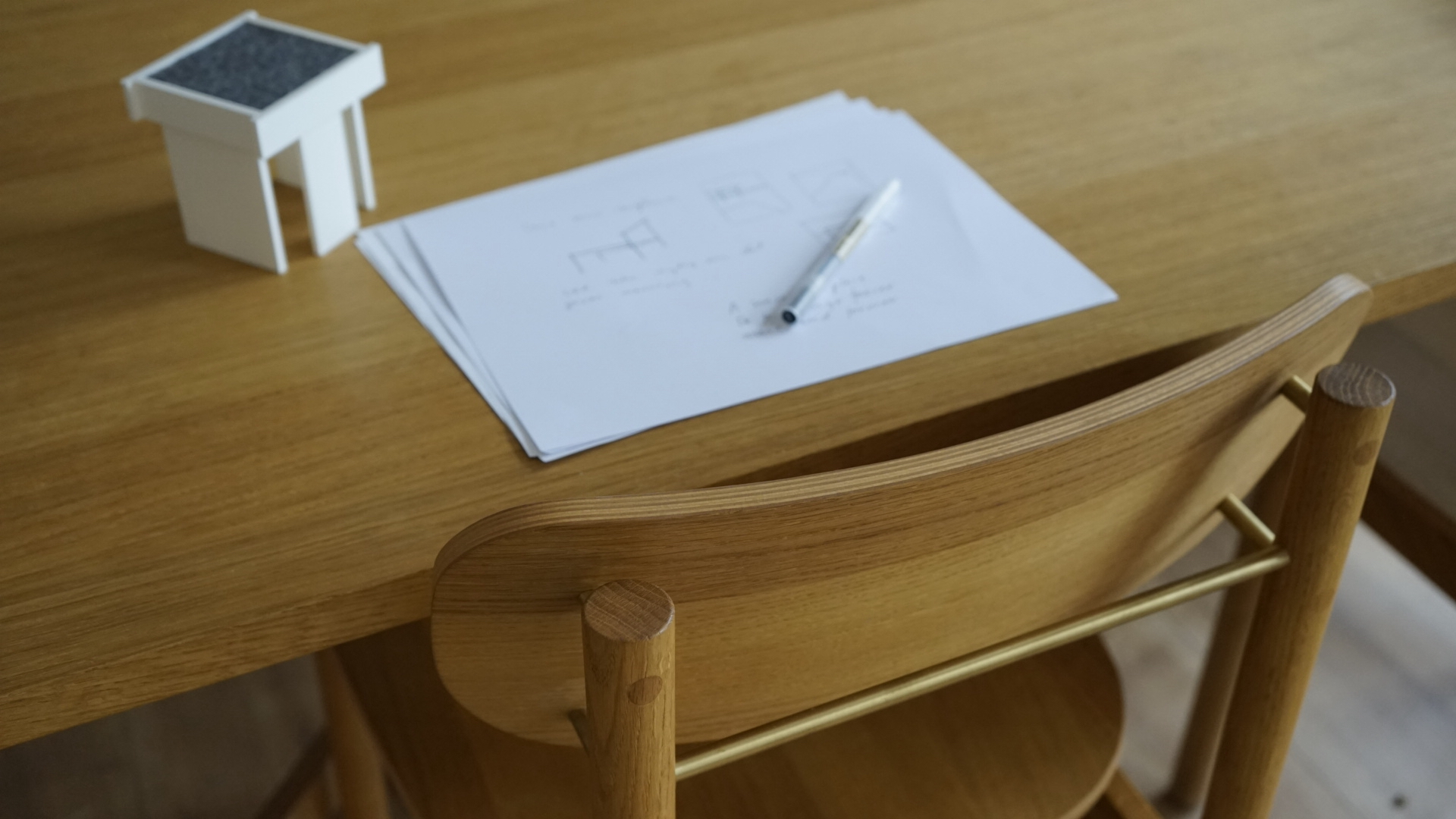The fourth season of DR’s furniture competition program “Denmark’s Next Classic” has just aired. As a furniture designer, it is unusual to see my profession portrayed as a baking competition-like contest, but I also acknowledge that it can give people outside the industry a good albeit limited understanding of what it entails to make furniture. The biggest and most significant problem with the program, in my opinion, is the economics behind it. Or rather, the lack of it. Because it is a concrete picture of how designers’ working conditions are not taken seriously.
When the first season was produced, I was asked if I wanted to participate. Back then, participants were offered DKK 25,000 per episode. It may sound reasonable at first glance, but when you look at what the money has to cover, it no longer adds up. The DKK 25,000 had to cover one’s full-time work, material costs, expenses for craftsmen, rent, food, etc. The series has six episodes, and the recordings run over about six months. This means that the participants must take half a year out of their calendar, which they must finance themselves.
My rejecting answer at the time, and the following three times I was asked to participate, was that I had not yet experienced how a cocktail of poor economics, unrealistic time pressure, and a competition format should be conducive to a good idea and to make relevant furniture of high quality. The caster seemed to find my criticism regrettable and would pass it on to the producer. Interestingly enough, the participants’ fee has dropped to DKK 17,500 as the program has become a bigger and bigger audience success. And that leads me to what many designers accept to a far too great extent: unpaid work.
In the design industry, it is common, especially as a new graduate and unestablished, to feel compelled to do tasks without payment because it may eventually lead to something else. Even in collaborations with companies, one can work for free on projects because the company “does not operate with sketch fees.” But far from all projects end up in production with subsequent uncertain royalty income.
There may be many reasons why one chooses to participate in Denmark’s Next Classic, and I neither want nor should judge anyone for it. Some may hope that it will give their careers a boost to be seen on TV or that it feels like an exciting challenge.
What I do want and need to judge, however, is when a state-funded TV channel like DR continues the same poor conditions that designers so often encounter in the furniture industry. DR does not pay the participants enough to complete the program without having to contribute significantly to the cash register themselves, work for free, ask other craftsmen to work very cheaply or for free, or get companies to sponsor materials. That is, it is not only the participant themselves who chooses to work for free, but they also have to ask other stakeholders to do the same so that DR can complete its program.
In return, I am entirely convinced that both the producer, caster, host, and photographer receive a collectively agreed salary for the time they spend on their work. And why shouldn’t they? They have some very special skills that DR needs to make the program. But the program is nothing without the participants.
Participants who have completed long higher education studies and are therefore professionally practicing designers. Often, the designer must negotiate for a proper contract themselves, but when a state-funded institution like DR or numerous design companies do not contribute to a fair model on their own, it can be really difficult to succeed as a furniture designer. Especially when you are a recent graduate, just want to get some assignments, and often can only make a living from your profession after at least five years due to long product development times, stranded projects, and unpaid work. Because, of course, it does not only take three weeks to make a good piece of furniture, and you cannot make a classic on demand, no matter how much DR repeats that claim.
Bio
Chris L. Halstrøm (b. 1977) is a furniture designer and artist based in Copenhagen, Denmark, and Småland, Sweden. She graduated as a furniture designer from the Royal Danish Academy of Fine Arts, School of Design (formerly the Danish Design School) in 2007, with previous studies in art and textiles in Stockholm and Berlin.
For many years, Chris has worked on furniture projects for exhibitions and companies such as Skagerak and Design Within Reach, and has been responsible for the interior design of Svinkløv Badehotel, for example.
In recent years, her focus has been on a textile art direction, where she creates embroidered works based on the themes of time and place. Chris’s works are represented by Francis Gallery in England and the USA.
In 2017, she received a three-year work grant from the Danish Arts Foundation and in 2022 the Finn Juhl Prize. She is a member of the Autumn Exhibition of the Association of Danish Woodworking and is currently a member of the Danish Arts Foundation’s Project Support Committee for Crafts and Design 2022-2025.
She recently started her own exhibition space in Copenhagen called Sølvgade 19.
www.chrisliljenberghalstrom.com
More knowledge in the Archive
Search for additional knowledge in the Archive on Formkraft.
Greasy fingers and practical research help craft out of the display case
Craft and design – a Velvet Revolution?
Sign up for newsletter
Receive information about new articles on contemporary Danish crafts and design. We send out newsletters every second month. Sign up here


